Posts by Rachel
The coins born from war and ice…
During its lifetime, The Royal Mint has struck coins for over 100 different countries from around the globe.
But do you know the story of how they came to strike Icelandic coinage?

The ‘inauguration’ of Iceland’s coinage
The story of how The Royal Mint came to strike Iceland’s coins began in World War Two.
After a night where the windows and roofs of The Royal Mint at Tower Hill had been destroyed by enemy action, the very first British-struck Icelandic coins were born as “a glacial wind whirled round the coining presses to inaugurate this coinage of Iceland” (explained by John Craig, The Deputy Master of The Royal Mint, in his annual report).
Prior to World War II, Iceland was ruled by the Danish crown and Icelandic coins had been struck by The Copenhagen Mint.
But the fall of Denmark into enemy hands during the war meant that Iceland had to look elsewhere for its coinage requirements…
First ever British-struck Icelandic coins
It was in 1940 that The Royal Mint received its first order to strike the five Icelandic denominations from 1 Eyrir (0.01 Krόnur) to 25 Aurar (0.25 Krόnur).
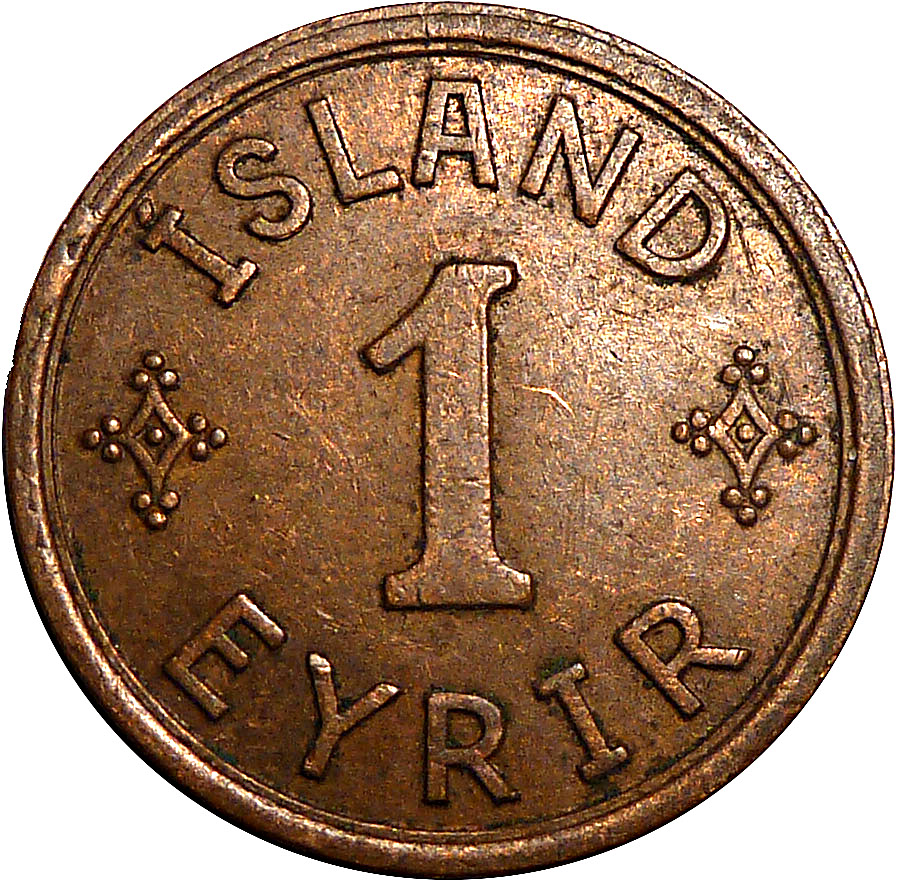
This was soon followed by additional orders for Krόnur and 2 Krόnur coins.
Not only did The Royal Mint experience damages to the building during WWII, but the price of nickel also rose substantially as the metal was in extremely high demand for munitions.
This meant it became necessary to strike the 1942 dated 10 and 25 Icelandic Aurar coins in the ‘poor metal’ of zinc rather than the now commonly used Cupro-nickel.
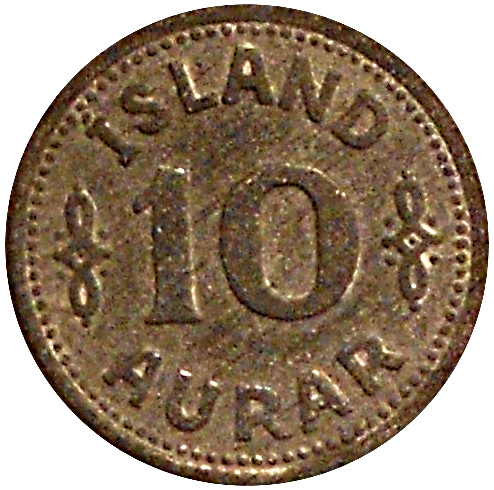
The new coins series
In June 1944 Iceland became a republic. A new series of coins were introduced in 1946, which remained in use for the next 35 years.
A full rendering of the national Coat of Arms appeared on the Krόnur and 2 Krόnur, complete with the bull, eagle, dragon and giant supporters.
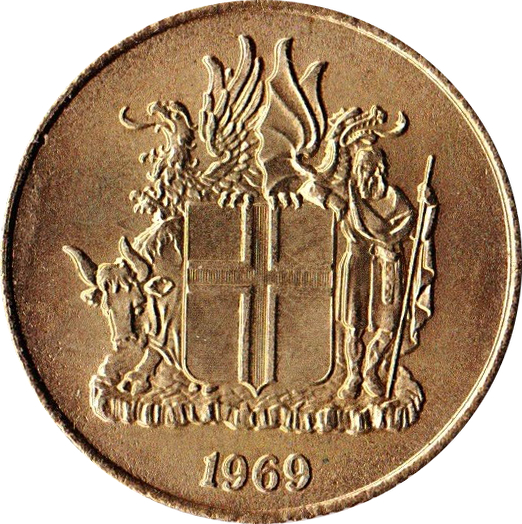
Four new denominations were added in the late 1960s, including the 50 Aurar, 5 Krόnur, 10 Krόnur and 50 Krόnur.
Iceland’s first commemorative coins
Iceland’s first commemorative coin was struck at The Royal Mint in 1961 – a gold 500 Krόnur marking the 150th anniversary of the birth of the scholar and statements, Jόn Sigurdsson.
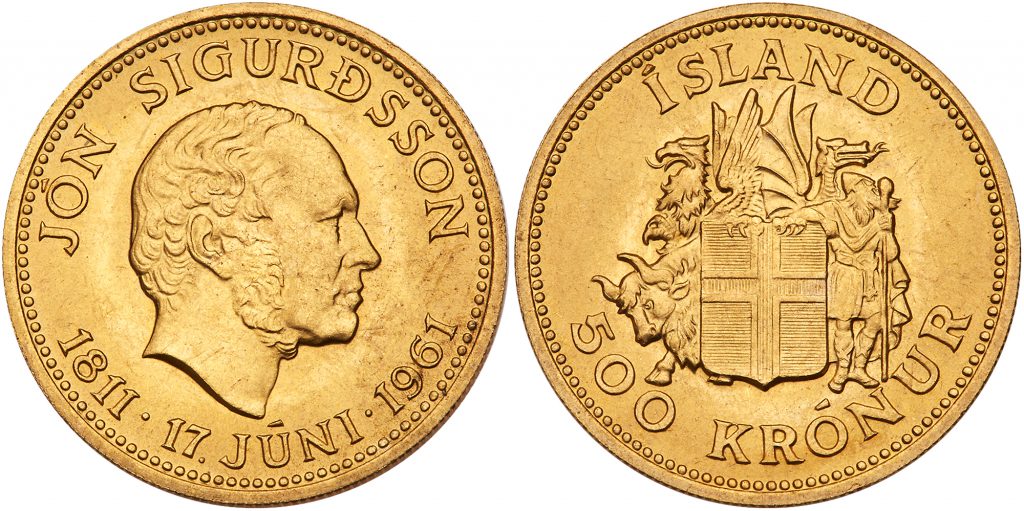
Iceland became a free and sovereign nation in 1918 when the Union Treaty with Denmark came into effect on the 1st December. To commemorate 50 years since this historic moment, a 50 Krόnur coin was issued.
In its first year of issue in 1968, the reverse design of the 50 Krόnur included a representation of the Althing (Parliament) building and carried an inscription marking the 50th anniversary of the achievement of Icelandic national sovereignty.
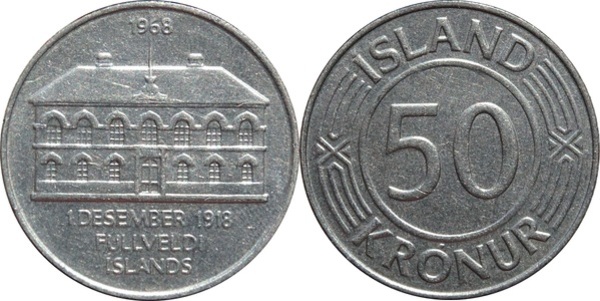
In 1974, The Royal Mint issued a three coin series of gold and silver coins, designed by Throstur Magnusson to commemorate the 1100th anniversary of the settlement of Iceland.
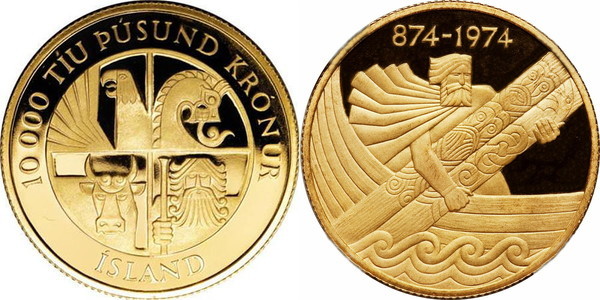
A major reform to Iceland’s coinage
The Icelandic financial market suffered hyperinflation in 1981, which was settled by a major reform of the coinage, resulting in a complete redesign and revaluation of the circulating coins.
100 old Krόnur was now worth just 1 new Krόna. As well as 1 and 5 Krόna coins, denominations of 5, 10 and 50 Aurar were also introduced.
The new obverses, in keeping with Magnusson’s designs, depicted the traditional protector spirits (“Landvættir”) of Iceland.

Each reverse portrays a variety of aquatic life, including dolphins, cod and northern shrimp.
As Iceland’s economy has been founded on fishing for so long, the pungent smell of fish smelting came to be known as “money smell”.
It’s great to discover more about different coins from around the world, and I’m sure you’ll agree that the stories behind Icelandic coinage are really fascinating.
If you’re lucky enough to have come across any Icelandic coins during your trips abroad, let us know in the comments below.
If you’re interested in coin collecting, our Change Checker web app is completely free to use and allows users to:
– Find and identify the coins in their pocket
– Collect and track the coins they have
– Swap their spare coins with other Change Checkers

Sign up today at: www.changechecker.org/app
The 2019 Gruffalo and Mouse 50p
Have you heard the story about the mouse who took a walk in the deep dark wood and ended up on a Gruffalo® 50p coin?
Following on from the original 2019 Gruffalo 50p, the second coin to feature the monstrous character also includes the wonderfully cunning Mouse from Julia Donaldson’s book.
This mouse might be small in stature, but the Gruffalo and Mouse 50p coin beautifully captures the full details of the brave little character from the nation’s favourite bedtime story.
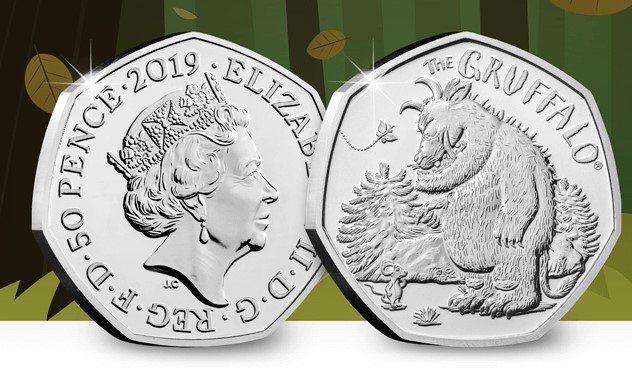
The reverse of the coin was created by Magic Light Pictures, who also designed the first coin, released in February 2019.
Since The Royal Mint announced a second Gruffalo coin, collectors were were wondering what might feature on the new coin – from the fox to the owl and all the creatures that live in the deep dark wood.
But I’m sure you’ll agree that the choice to feature the Mouse resulted in a fantastic coin designed to illustrate the classic story of The Gruffalo.

In recent years, 50ps themed around children’s literature have inspired a whole new generation of collectors, with new coin releases appealing to families, youngsters and fans of books, as well as traditional collectors.
The Gruffalo is no exception, and the release of the first coin at the start of 2019 sparked huge excitement across the UK.
So much so in fact, that the Silver Proof version of the coin SOLD OUT at The Royal Mint in just a few hours!
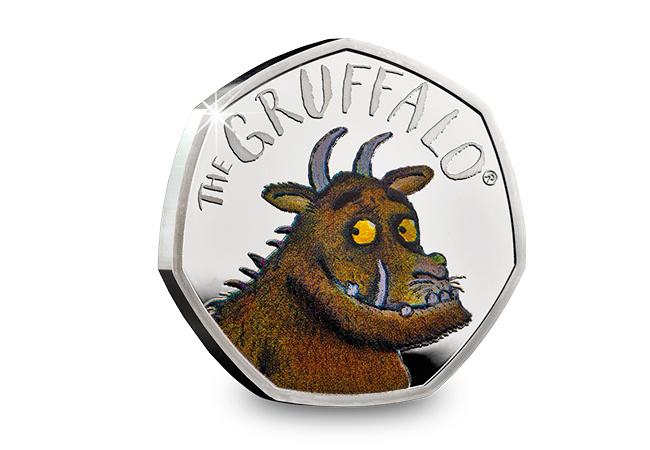
With over 13.5 million copies of The Gruffalo sold worldwide, the collectability of this coin is undeniable and I’m sure that collectors will be keen to get their claws on this one (warts and all!)
Rarest 50ps Revealed! 2018 Mintage Figure Update
Exciting news! The Royal Mint have revealed the latest mintage figures for 2018 coins!
Seven 50p coins entered circulation in 2018 and collectors across the nation have been debating how rare each one might be.
But now the official figures have been revealed and it looks like there are some particularly rare ones we should be looking out for…

The rarest Beatrix Potter 50ps
Collectors who have held on to their 2018 Beatrix Potter 50ps will be delighted to see that these coins have lower mintages than any of the previous Beatrix Potter coins issued in 2016 and 2017.
In fact, three out of the four Beatrix Potter 50ps released in 2018 are even rarer than the 2016 Jemima Puddle-Duck 50p – previously thought of as the rarest Beatrix Potter 50p in circulation!
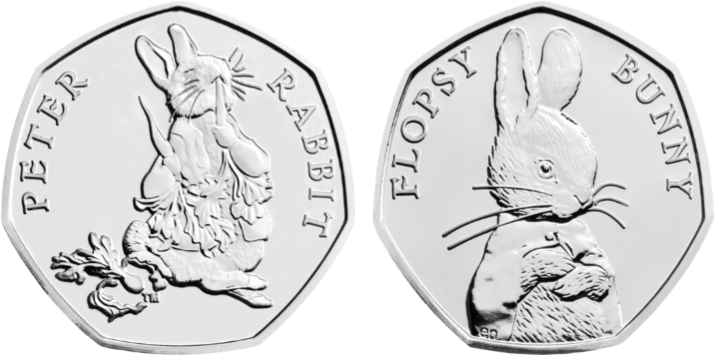
With a mintage of just 1,400,000 the 2018 Peter Rabbit and 2018 Flopsy Bunny 50ps are sure to become incredibly sought-after amongst collectors, as they take joint second spot on our mintage figure chart (which excludes Olympic 50ps).
These two coins, alongside the 2018 Mrs Tittlemouse (mintage: 1,700,000) have pushed the 2017 Sir Isaac Newton (mintage: 1,801,500) off the podium.
Whilst the 2018 Tailor of Gloucester has a slightly higher mintage at 3,900,000 the other three coins in the 2018 series have only been pipped to the post by the UK’s rarest 50p in circulation, the Kew Gardens.
With a mintage of 210,000 this 50p is considered the holy grail of change collecting and dominates the Change Checker mintage figure charts and Scarcity Index.
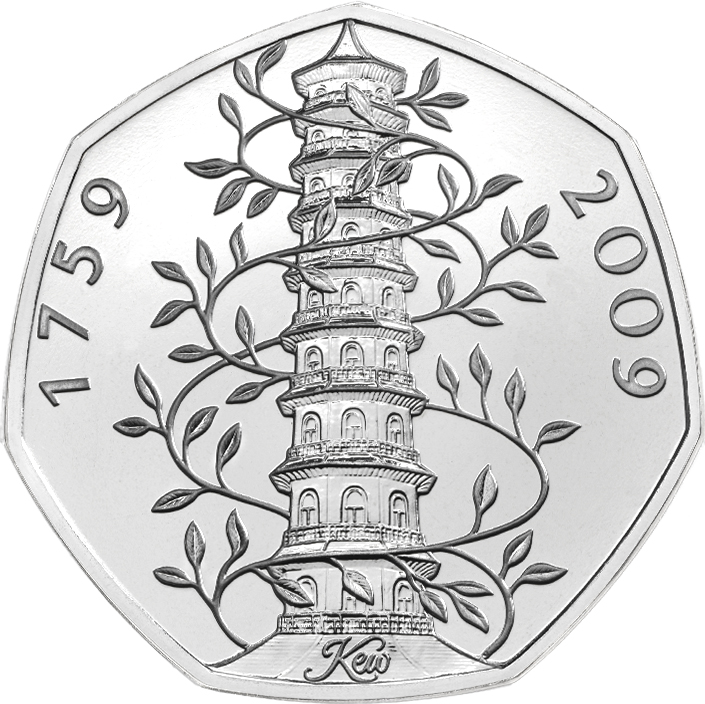
What about the Olympic 50ps?
In 2012, the release of the Olympic 50p series kick started a collecting frenzy across the nation.
It’s estimated that around 75% of these coins have been removed from circulation by collectors which means they are incredibly sought-after, especially considering these 50ps have some of the lowest mintage figures in circulation…
Many of the Olympic 50ps have a mintage less than 2,000,000 with the rarest (the Olympic Football 50p) having a mintage of just 1,125,500.

Taking these rare 50ps into consideration, the 2018 Peter Rabbit and Flopsy Bunny coins would sit in joint sixth position, below the Kew Gardens, Football, Wrestling, Judo and Triathlon 50ps.
£2 Coin Update
As well as updating the 50p mintage figures, The Royal Mint also revealed that no £2 coins were issued into circulation last year.
There have been no new £2 coins issued into circulation since 2016, which may in part be due to the introduction of the new 12-sided £1 coin in 2017.
The new definitive £2 was released in 2015, replacing the Technology £2 with a Britannia design, but for the past two years it seems there has not been enough demand to issue this coin for circulation.
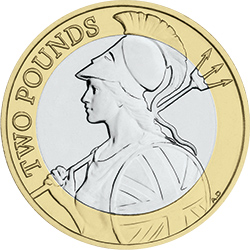
In fact, aside from the £1 coin, no new definitive coins were released at all last year, from the 1p to the £2 coin.
A-Z 10p update
Despite no definitive 10p coins entering circulation in 2018, The Royal Mint have confirmed mintage figures for the highly popular A-Z of Great Britain 10p coins.
From Angel of the North to Zebra Crossing, 26 new 10p designs were released in 2018 to celebrate what makes Britain British.

Initially, 2.6 million of these coins were released, followed by another 2.6 million later in the year.
However, up until now the individual mintages for each design had not been confirmed.
The mintage figure update now reveals that 220,000 of each design entered circulation in 2018, which makes the individual 2018 10p coins almost as rare as the Kew Gardens 50p…
Have you been lucky enough to find any of these coins in your change? It’s always exciting when new mintage figures are revealed and your realise just how rare the change in your pocket really is!
We’ll be updating the Change Checker Scarcity Index next month and it will be exciting to see how these new figures impact the index.
If you’re interested in coin collecting, our Change Checker web app is completely free to use and allows users to:
– Find and identify the coins in their pocket
– Collect and track the coins they have
– Swap their spare coins with other Change Checkers

Sign up today at: www.changechecker.org/app



